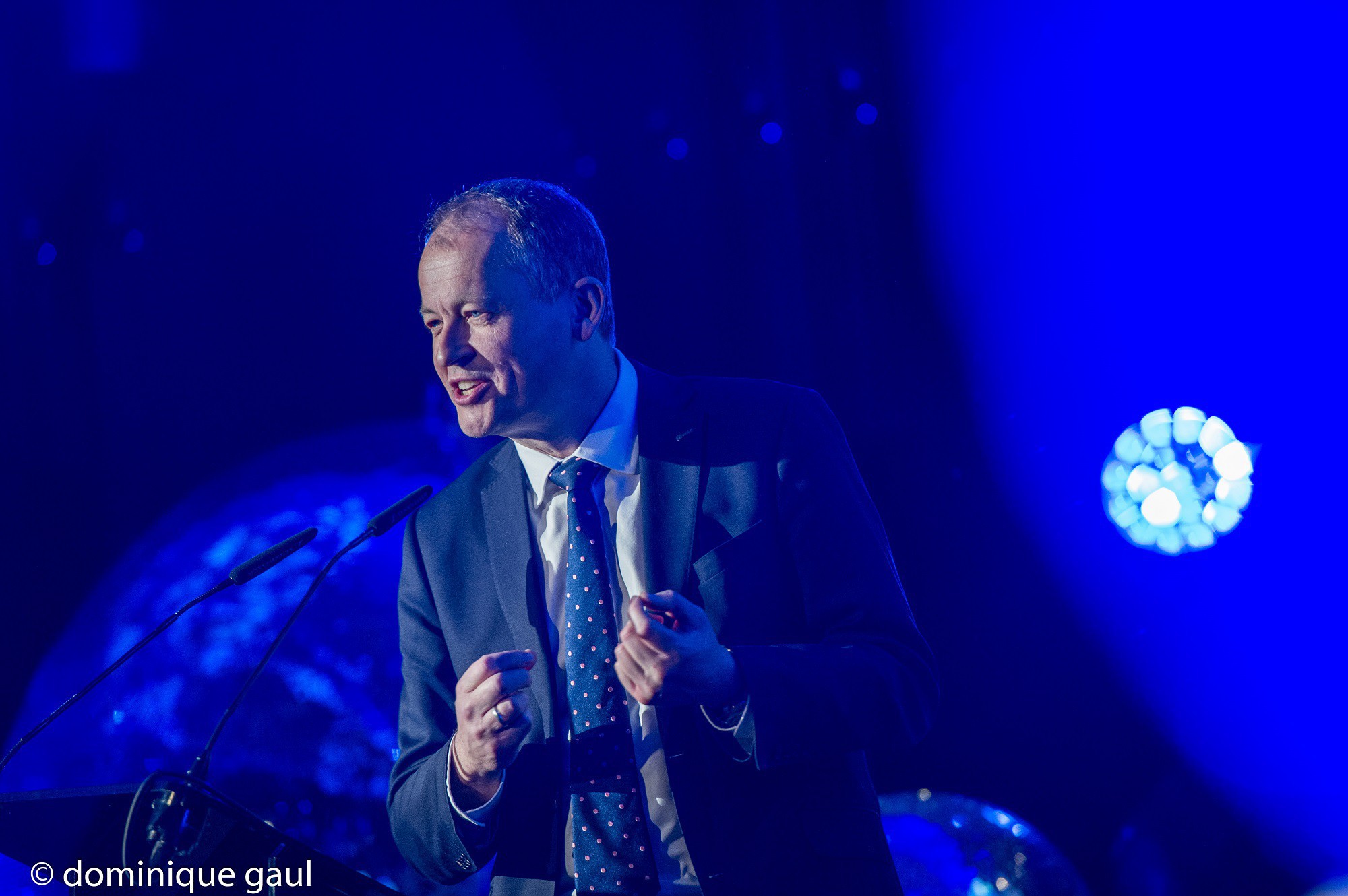The Awards Ceremony of Europe’s first innovation competition dedicated to space exploration on 16 November 2017 brought new business ideas on stage, supported by the European Space Agency (ESA), Space Resources.lu, Astrosat, Chamber of Commerce of Huntsville, Airbus and Merck.
According to ESA, the building blocks of space exploration are still achievable if all countries work together: It is a commercial & international cooperation. This is exactly what ESA Director General, Prof Jan Wörner, calls Space 4.0 – a driving vision.
David Parker, Director of Human Spaceflight and Robotic Exploration at ESA, held an exciting speech at the Space Exploration Masters Award Ceremony. For all innovators, entrepreneurs and space enthusiasts: Check out his main messages. Here below you can find his insights and background information:
ESA’s space exploration strategy focuses on three destinations: Low Earth Orbit (LEO), the Moon and Mars.
The International Space Station (ISS) is a shining example for international collaboration in LEO. Its construction depended on dozens of different elements made in the USA, Canada, Russia, Japan and Europe that were first bolted together 400 kilometres over our heads. The ISS has been continually occupied for 17 years. It’s an orbiting laboratory where dozens of astronauts of different countries have carried out hundreds of experiments.
Collaboration examples are ICE Cubes and Bartolomeo – a commercial partnerships with industry (Space Applications Services and Airbus) – and ESA can make them a test laboratory for innovators. Everything ESA does in space exploration is through international cooperation.
On the Moon about 400.000 kilometres from Earth, ESA will drill below the surface in search of volatiles such as water. In a second step, ESA wants to demonstrate the use of resources to support future explorers.
Parker emphasises that ESA wants to demonstrate this with a challenge – to create breathable oxygen and drinkable water. ESA wishes European labs and industry to build this technology. But to get this In Situ Resource Utilisation package to the surface of the Moon, ESA doesn’t intent to build a lander but to buy a ticket. Maybe others do as well? If ESA can build a partnership with the private sector, it can help stimulate sustainable space exploration and space utilisation economy by offering its experience and technical skills.
For the third destination, Mars, ESA will launch ExoMars 2020, the first dedicated life-search rover that will be the first to explore the Red Planet beneath the surface using a radar and drill. By the way, both missions, ExoMars 2020 and the ExoMars 2016 orbiter, are in partnership with Russia.
As a stepping stone to human exploration of Mars, science simply demands a robotic mission to make the first-round trip to Mars and return precious samples to ESA laboratories – there- and back. These steps will prepare for human landings in the 2030s.
Parker concludes: Exploration is much more than only science. It’s the ultimate proving ground for many technologies – efficient energy production, robotics, life support systems and resource utilisation just to name a few. Space exploration is not about robots versus humans. It’s about a partnership of humans and robots.
Here you’ll find out more about the Space Exploration Masters!
In 2017, AZO has launched the Space Exploration Masters on behalf of the European Space Agency (ESA) and in line with the goals of the ESA Space Exploration Strategy, in cooperation with strong world-class partners. The Space Exploration Masters is an international competition to identify best technology transfer business successes, as well as to empower and foster business innovation around space exploration activities in Low Earth Orbit (LEO), on the Moon, Mars, or beyond – for the benefit of society and Earth.




